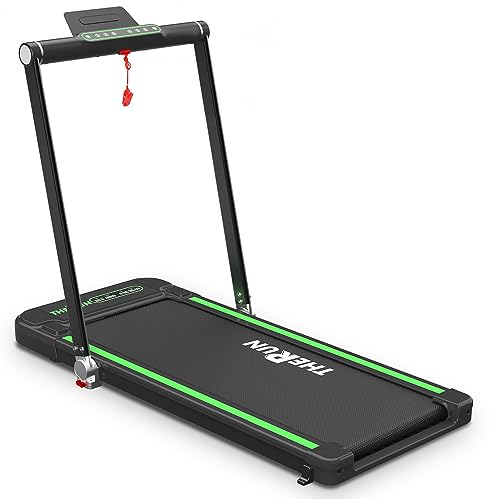
The Comprehensive Guide to Home Treadmills: Everything You Need to Know
With an increasing focus on physical fitness and health in today's busy world, home treadmills have emerged as a popular option for those wanting to instill regular workout into their routines. Whether for aesthetic improvement, benefit, or physical fitness tracking, treadmills offer a flexible option for many physical fitness enthusiasts.
This post explores numerous aspects of home treadmills, offering insights into their features, advantages, and vital considerations for possible buyers. It also attends to common questions and mistaken beliefs about these exercise machines.

Table of Contents
- What is a Home Treadmill?
- Benefits of Having a Home Treadmill
- Types of Home Treadmills
- Key Features to Consider
- Maintenance Tips for Your Treadmill
- Frequently Asked Questions about Home Treadmills
- Conclusion
What is a Home Treadmill?
A home treadmill is a fitness gadget created for running or walking while remaining in one place. Unlike conventional running outside, it allows individuals to work out in the convenience of their homes. Treadmills can be powered by electrical power or can be manual, needing the user to propel the belt with their own effort.
Advantages of Having a Home Treadmill
The advantages of owning a home treadmill are various. Below are some crucial advantages:
- Convenience: Users can exercise at any time, avoiding weather restraints or gym schedules.
- Time Management: Reduced travel time to and from a gym, allowing for quicker workouts.
- Personal privacy: The comfort of exercising in a personal environment, perfect for those who feel uncomfortable in public settings.
- Versatility: Adjustable speeds and inclines offer differed exercise options, accommodating different physical fitness levels.
- Integration with Technology: Many modern-day treadmills come geared up with physical fitness apps and tracking systems that monitor progress.
Kinds Of Home Treadmills
Home treadmills can be categorized into several types, each serving different requirements and choices:
| Type | Description |
|---|---|
| Motorized Treadmills | Electric motors that allow users to change speed and incline with push-button controls. |
| Manual Treadmills | Needs physical effort to move the belt, normally more compact and portable. |
| Folding Treadmills | Space-saving styles that can be folded when not in usage. |
| Treadmill Desks | Enable users to walk while working, integrating physical fitness into their day-to-day jobs. |
Picking the Right Treadmill
Consider these elements when picking the appropriate type of treadmill for personal usage:
- Space Requirements: Ensure the treadmill fits comfortably in your designated workout area.
- Speak with Reviews: Look at user feedback and expert reviews to comprehend performance and dependability.
- Budget plan: Set a clear spending plan, as rates can differ widely.
- Use Frequency: Assess how often the treadmill will be utilized to figure out durability and functions required.
Key Features to Consider
When looking for a home treadmill, it's essential to assess specific functions that enhance the exercise experience. Specific functions to focus on consist of:
- Motor Power: Look for a motor with a minimum of 2.0 CHP for reliable performance.
- Running Surface: A bigger running surface area is more effective, especially for those who wish to run or take longer strides.
- Incline Options: Adjustable inclines increase workout intensity and help engage various muscle groups.
- Cushioning System: Good shock absorption can significantly lower the influence on joints and prevent injuries.
- Innovation Integration: Built-in heart rate displays, Bluetooth connection, and incorporated exercise programs can enrich your physical fitness journey.
Maintenance Tips for Your Treadmill
A well-kept treadmill can last for many years. Routine maintenance is essential to making sure optimum performance. Think about these maintenance ideas:
- Keep It Clean: Wipe down the surface regularly to eliminate dust and sweat.
- Lube the Belt: Apply silicone lubricant according to manufacturer standards to decrease friction.
- Look for Wear and Tear: Regularly check the belt and deck for signs of damage or excessive wear.
- Check the Motor: Clean dust from the motor location and ensure proper ventilation to avoid getting too hot.
- Follow User Manual: Always refer to the user manual for specific upkeep directions related to the design.
FAQs about Home Treadmills
1. Are home treadmills reliable for weight reduction?
Yes, home treadmills can be really efficient for weight loss if used regularly as part of a balanced diet and physical fitness regimen.
2. How much area do I require for a treadmill?
While it differs by model, a typical home treadmill will require at least 6.5 feet in length and 3 feet in width.
3. Do I need special shoes to utilize a treadmill?
While special shoes aren't essential, buying great quality running shoes can assist avoid injuries and enhance comfort.

4. Can I enjoy TV or listen to music while using a treadmill?
Absolutely! A lot of contemporary treadmills have functions that allow users to view television or listen to music through integrated speakers or through Bluetooth connections.
5. For how long should I use a treadmill every day?
For optimal health benefits, objective for a minimum of thirty minutes of moderate-intensity workout on the treadmill most days of the week.
Owning a home treadmill unlocks to hassle-free and flexible workouts appropriate for people of all ability levels. Understanding the various types, essential functions, and appropriate upkeep can assist ensure that your financial investment stays effective and satisfying. As physical fitness becomes a top priority for numerous, home treadmills provide an exceptional opportunity for personal health and wellness, making it simpler than ever to integrate exercise into every day life.
With the right resources and assistance, a home treadmill can become an important part of one's physical fitness journey, assisting people attain their objectives in a sustainable manner.





